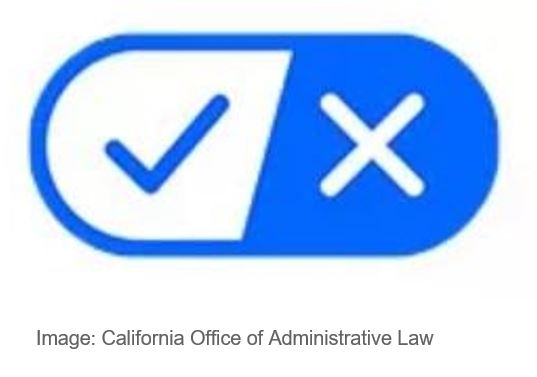New regulations have recently been approved that would expand the California Consumer Privacy Act of 2018 (CCPA), strengthening the privacy protections of the landmark legislation. The new regulations ban the use of “dark patterns,” reports Brianna Provenzano for Gizmodo. “California is at the cutting edge of online privacy protection, and this newest approval by OAL [Office of Administrative Law] clears even more hurdles in empowering consumers to exercise their rights under the California Consumer Privacy Act,” said former California Attorney General Xavier Becerra of the CCPA update. “These protections ensure that consumers will not be confused or misled when seeking to exercise their data privacy rights.”
What Are Dark Patterns?
Dark patterns are tactics used by apps and web pages that confuse consumers, often coercing them into enrolling for something they don’t want or understand. The interface is typically similar to something that isn’t illicit, increasing the vulnerability of targeted consumers who may be required to click through complicated language and purchase information.
Do The New CCPA Regulations Ban All Use Of Dark Patterns?
No. Reporter James Vincent from The Verge explains that, according to the regulations, only dark patterns with “‘the substantial effect of subverting or impairing a consumer’s choice to opt-out’ of schemes where their personal data is being sold” are targeted in the updated legislation. Examples offered in the regulations include:
- Using confusing language like double-negatives (eg “Don’t Not Sell My Personal Information”)
- Forcing users to “click through or listen to reasons why they should not submit a request to opt-out before confirming their request.”
- Requiring users to “search or scroll through the text of a privacy policy or similar document or webpage to locate the mechanism for submitting a request to opt-out.”
Why Is California Adding Regulation To The CCPA To Ban Dark Patterns?
The use of dark patterns is quite widespread, with approximately one out of every 10 ecommerce sites using dark pattern methods to gain customers. Dark patterns are also commonly used by scammers to trick consumers into downloading costly apps. The addition of regulation banning dark patterns to the CCPA is another way the bill protects consumers vulnerable to privacy breaches and financial obligations they can’t meet. California’s ban of dark patterns is the first in the country.
What Do Advertisers Need To Know About The New CCPA Regulation?
“Businesses that continue to use dark patterns will receive a 30-day window to change their website design or risk further punishment. If a company doesn't comply, the law says it will be ‘liable for a civil penalty under laws relating to unfair competition in an action to be brought by the Attorney General,’” reports Allana Akhtar for Business Insider.

Advertisers that deploy the unauthorized dark pattern tactics and engage residents of California need to prioritize compliance, curing any potential conflicts with the new regulations. Additionally, advertisers can choose to use a specially created “Privacy Options Opt-Out Icon” that standardizes the ability to easily opt-out.
Are You Looking For Safe Ways To Reach Opted-In Audiences?
Digital Media Solutions® (DMS) understands how important it is for brands to adhere to regulations like CCPA, TCPA and CAN-SPAM, so we have prioritized and operationalized compliance across everything we do to offer brand-safe digital consumer engagement opportunities. DMS de-risks ad spend while helping our advertiser clients connect with more consumers and expand their customer bases.



